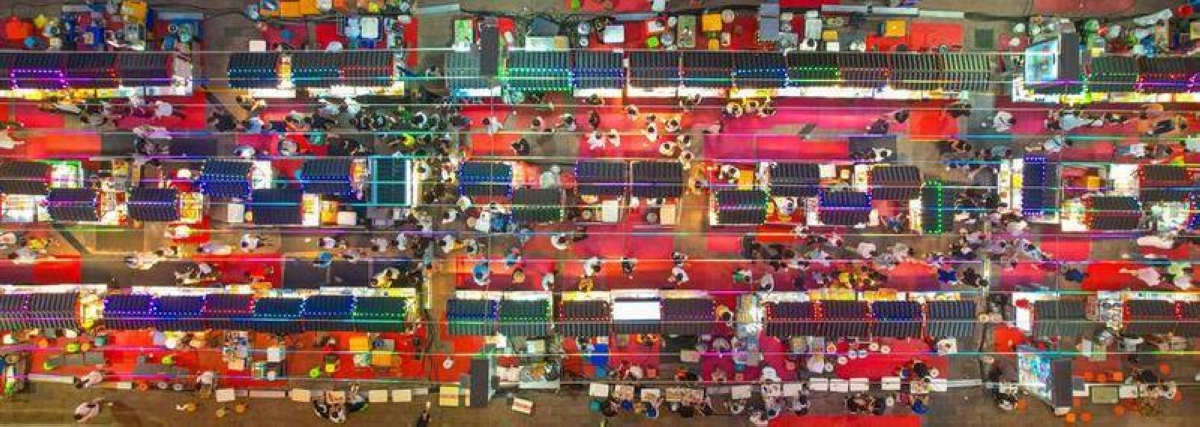CHONGQING — As dusk settled over Songgai ancient town in southwest China’s Chongqing Municipality, the scent of roasted rice cakes and steaming tofu pudding mingled with the lively hum of visitors wandering beneath rows of oil-paper umbrellas and glowing snack stalls.
“Having explored the town by day, I returned to experience its nighttime charm. The lanterns and ancient architecture create an entirely different atmosphere after dark,” said Zheng Guangxin, who hails from east China’s Shandong province.
This shift toward nighttime leisure — from bustling markets and cultural performances to late-night dining — is becoming an increasingly popular way to spend holidays across China.
BOOST An aerial drone photo taken on Aug.12, 2025, shows a night market in Qingdao, Shandong province. China’s Ministry of Culture and Tourism reported how the night economy has driven consumption during the Mid-Autumn Festival and National Day holidays. XINHUA PHOTO
The country recorded 888 million domestic tourist trips during the eight-day National Day and Mid-Autumn Festival holiday, up 123 million from the seven-day National Day holiday in 2024, data from the Ministry of Culture and Tourism showed.
According to the Ministry of Commerce’s urban resident consumption habits survey, approximately 60 percent of domestic consumption occurs at night. Driven partly by the night economy, domestic tourism spending reached 809 billion yuan (about $113.8 billion) during the holiday, up 108 billion yuan year on year.
From central China’s Fenghuang ancient town in Hunan province, where visitors pose in traditional attire against glowing waterfront backdrops, to cliffside guesthouses in east China’s Jiangxi province, nightlife is redefining travel experiences.
In Chongqing, the nightly closure of Qiansimen Bridge to vehicles transforms the structure into a vibrant pedestrian market.
“We prepared for days and came early to secure a good spot,” said a vendor surnamed Zheng, who sells popular snacks like pan-fried dumplings and triangular rice cakes.

